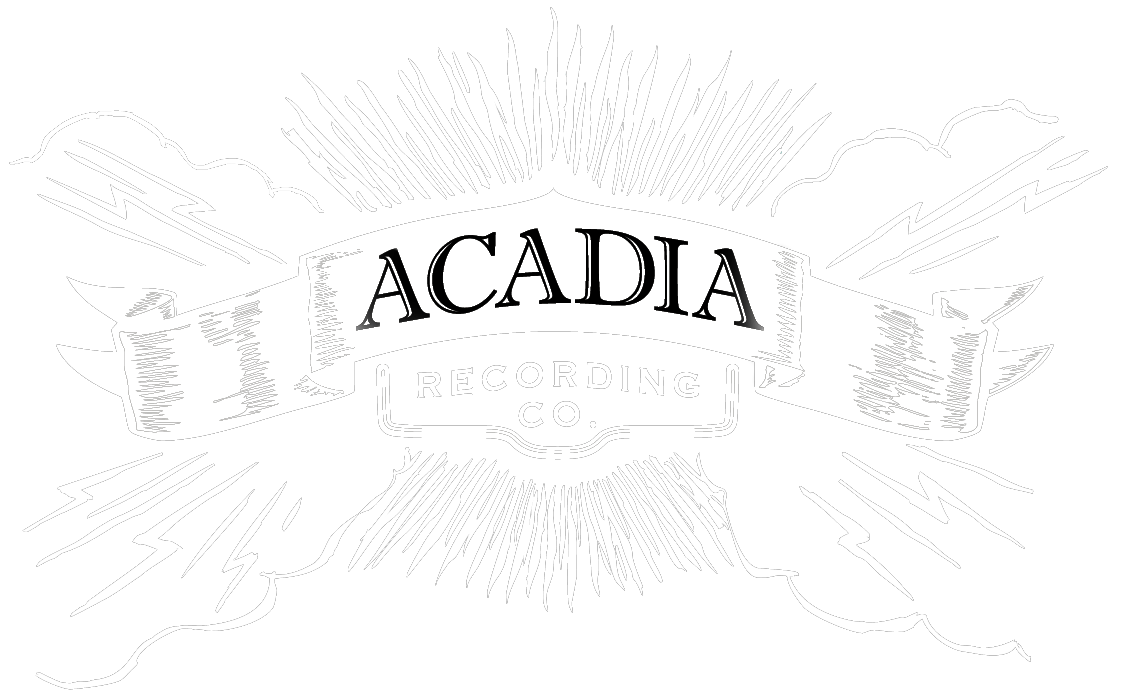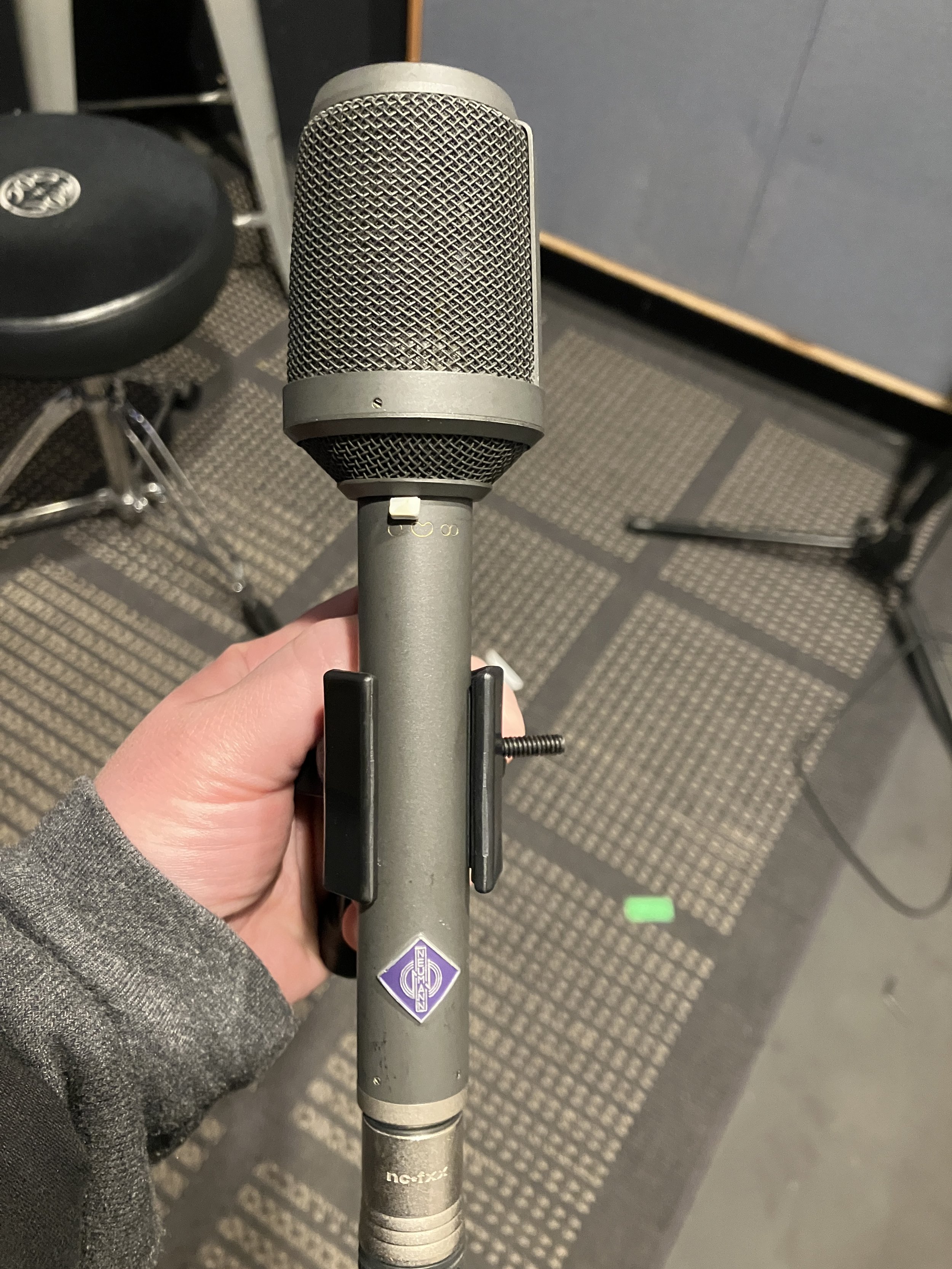Our Neumann Microphone Family
In the world of professional recording equipment, there are many iconic brands. When it comes to microphones, one name rests comfortably at the top of the list - Neumann.
Meet the family
A Century of Innovation
In 1928 in Berlin, Neumann produced the first commercially available condenser microphone - the “Neumann Bottle” CMV 3, marketed under the Telefunken brand. The CMV 3 featured interchangeable capsules for a variety of polar patterns.
Neumann would go on to pioneer many features we take for granted today. By 1949 the U47 was introduced and was the first to feature switchable polar patterns offering both cardioid and omnidirectional modes, and in 1951 the legendary M49 offered continuously variable polar patterns that were selectable from the power supply making it perfect for recording large classical ensembles where the mics were often flown high in the air.
1960 brought the U67 —sporting three selectable polar patterns (adding figure-8 to the usual cardioid and omni options), a low pass filter, and a -10db pad —all features considered standard today.
In 1967, Neumann introduced a standardized system to supply 48v power to the microphones versus each mic model needing a different specific voltage. The same year saw the introduction of the now ubiquitous U87. Once the VF14 vacuum tube used in the U47 was discontinued in 1965, the U87 was the first solid-state alternative. It employed all the latest features (three switchable patterns, phantom power, a pad, and LPF) but used a new FET based “tubeless” topology. The U87 has become an industry standard and every studio worth it’s salt has at least one (probably more!) in their mic locker.
Neumann Mic Identification
The color of the badge on these microphones indicates the type of internal electronics. Purple badge mics use an FET topology, coupled with an output transformer. Classic examples include U87s and KM84s.
A red badge dictates an FET mic but using a transformerless design - KM183/184s use this arrangement.
Black badges indicate a tube based design - many vintage Neumanns sport the black badge as well as the modern reissues of the U67 and M49.
There are also less common blue and green badge Neumanns, indicating a digital output or a dynamic mic respectively.
Our Neumann Mic Locker
U87i large diaphragm multi-pattern condenser (x2)
Next to the ubiquitous Shure SM57, the U87 is likely one of the most commonly used microphones in a professional studio. They are the defacto standard in the world of dialog recording. Capable of handing high SPL, they sound great on toms, overheads, guitar and bass cabs. They are one of our go to mics for vocals, particularly on female voices. We use ours so often we just had to get another!
KM254 small diaphragm cardioid condenser (vintage)
In 1953, Neumann introduced the omnidirectional KM53 (the KM designation is short for Kleines Mikrofon, which translates to “small microphone”). A year later they added the KM54 - the cardioid version of the same mic. Featuring a very thin (read: notoriously fragile) nickel diaphragm and the fabled AC701c vacuum tube. They are truly remarkable sounding mics, with an incredibly smooth top end that is flattering on all sorts of instruments - particularly acoustic instruments like guitars, mandolins, and violin. A multi-pattern version (featuring two diaphragms) the KM56 soon followed.
Acadia engineer Jason Phelps has long been a disciple of famed engineer/producer Gary Paczosa (particularly his work with Alison Krauss and Union Station) who declared in an interview his love of KM54s paired with Doug Sax’s Mastering Labs ML-1 tube preamps (also favored by the legendary engineer Al Schmitt). A few years ago, we finally acquired a pair of ML-1 preamps thus completing the first half of the puzzle.
In 1960 Neumann introduced the “25x” series of microphones at the request of the broadcast industry. These mics featured an updated connector and improved RF rejection.
KM54s have skyrocketed in price the last few years fetching many thousand dollars. Between the delicate nickel capsule and the long discontinued AC701c tube (featured in other classic Neumanns including the M49) purchasing one was a daunting proposition. NOS tubes could be found occasionally for sale (at $1500-$2000 each) but the nickel capsules were another story. When the nickel KM5x mic capsules were returned to Neumann for repair they were replaced with the newer Mylar skinned capsules such as found on KM84s etc.
Our vintage KM254
We’d been watching for a vintage KM254 on Reverb etc. but spending SO much money on a 60+ year old notoriously fragile mic was no small decision. Our requirements therefore were that the capsule be fully intact and that we could find at least one replacement AC701c tube to future-proof our investment. After a few near misses, a KM254 came up on Reverb but it was being sold by Vintage King.
NOS AC701c vacuum tubes
I called VK to ask about the mic and its condition, and was told it had been given a clean bill of health by their chief mic tech “Timmo”. I asked for photos of the capsule and they responded that removal of the cover can damage the fragile capsule but they would try and see if any images were available. Ultimately they sent a set of pics taken when they first received it and indeed the capsule appeared at least visually to be in pristine condition. The sales rep assured me “we aren’t in the business of selling expensive vintage mics that don’t work perfectly - we offer a 30 day no questions asked return policy so you can test it for yourself” which was certainly reassuring. So requirement one fulfilled, now it was time to try and find a replacement tube. There are essentially no viable “used” AC701c tubes - the tubes are tiny and have several solid wire leads which get twisted into precise coils to then be mounted in the mic making it very difficult to install a used tube into another mic. The stars had clearly aligned when an online seller listed a set of five NOS AC701c tubes (for $2000 each - gulp!) We contacted the seller to get the story - he was a former studio owner/engineer who had purchased a package of 12 tubes on a trip to Germany 25 years ago. He had replaced several tubes in his mic collection and sold a few tubes off over the years. He no longer owned any mics that use the tubes and was selling off the last few he had. I explained our situation, that these weren’t for a “collection” or a speculative purchase to be flipped online for a profit, etc. He generously agreed to sell us TWO tubes for $3000 as long as we assurred him that they weren’t going to be resold immediately. THANK YOU REVERB TUBE GUY!
So it was set - we ordered the mic and the spare tubes and soon they had arrived. The mic was in perfect condition, other that the fact that it was stamped with the name of a European broadcast company along with a number - it turned out to be two numbers off from the KM254 featured in a photo in Dan Alexander’s famous mic book.
The first instrument we recorded was a classical guitar and the results were ASTOUNDING. The tone was a picture perfect representation on the source, with a beautiful smooth treble and even frequency response - truly stunning! We couldn’t be happier!
Our KM84 and U87 mic pairs
KM84 small diaphragm cardioid condenser (stereo pair)
The KM84 is another classic Neumann condenser, famous for capturing flattering representations of acoustic instruments of all types. The KM84 is different than the KM5x series in two ways - it is a tubeless design, using an FET topology instead. The other main difference is the diaphragm, which is skinned with mylar as opposed to nickel. Mylar capsules are much more durable than the nickel designs.
We purchased two 84’s around the same time. They both sounded good, but they sounded considerably different from one another so we decided to send them to Tom Orofino, master mic designer/repairman for a thorough service. Most older mics have caps that need replacing etc. and after a long wait we got the bad news - Tom recommended replacing the capsules on both mics. The good news however was that Neumann still has NOS KM84 capsules for sale after all these years and when they were finished, we’d essentially have a matched pair of brand new SDCs. After another significant wait, the mics returned and they sound SUPERB. In a variety of stereo configurations they absolutely excel on violins, mandolins, guitars - they are also our goto hi hat mic. True workhorses!
KM183 small diaphragm omni condenser (stereo pair)
We recently were tasked with recording the Hope Organ of the Burlington Baptist Church. Capturing such a massive instrument is no small task. Having never recorded an enormous pipe organ before, we turned to our trusty “AES Guide to Classical Classical Recording Techniques” which as usual presented a variety of ways to tackle the job. The one thing that was made clear was that the main pair of mics should be omnidirectional, but not just any omni mics. To accurately capture the extended low end of such an instrument requires the use of dedicated, single pattern “pressure omni” mics as opposed to dual diaphragm “pressure gradient” mics. Pressure omni mics have a single diaphragm and NO vents in the capsule behind the diaphragm. The only mics in our locker that were true pressure omnis were our pair of Earthworks QC50s and we had found them to be finicky about how they were supplied with phantom power.
In checking out the options we first looked at the option of vintage Neumann KM83s but it was certainly cost prohibitive. KM84s are extremely popular but their modern currently available successor, the KM184 introduced in 1999, is roundly dismissed as inferior - mainly due to a prominent HF boost that many find unflattering. However in doing some research a source at Neumann reported that apparently when the KM184s were first released, many were returned for their lack of that smooth top end that made the KM8x series famous. But virtually no one complained about the new KM183.
We found a stereo pair at a reasonable price and soon they arrived. We put them through the paces on piano, as room mics, close micing guitar - they performed admirably in all cases. Check out one of the organ recordings, composed by long time Acadia client Conor Mulroy and performed by organist Evan Allen. - there is no eq or fake subharmonic BS occurring here, the recreation of the low end we felt in sanctuary that day was a religious experience for an audio engineer.
KM86 small diaphragm multi-pattern condenser
KM86
Our newest member of the collection is this KM86. Being a purple badge mic, it is an FET design but with two mylar capsules to produce three polar patterns = cardioid, figure of eight and omnidirectional. This mic is particularly effective in omni, the lack of proximity effect allows for close miking without unwanted low end rumbling.
Attack of the clones
There are a few Neumanns on our wishlist, including a U67 (tube version of the U87), U47fet (classic “kick out mic” and also sounds great on vocals) and the M49 featured in the classic “Decca Tree”, made of unobtanium. That being said we have many fine microphones from other makers that follow these designs so we’re sleeping pretty well at night :)
What’s in your locker?







